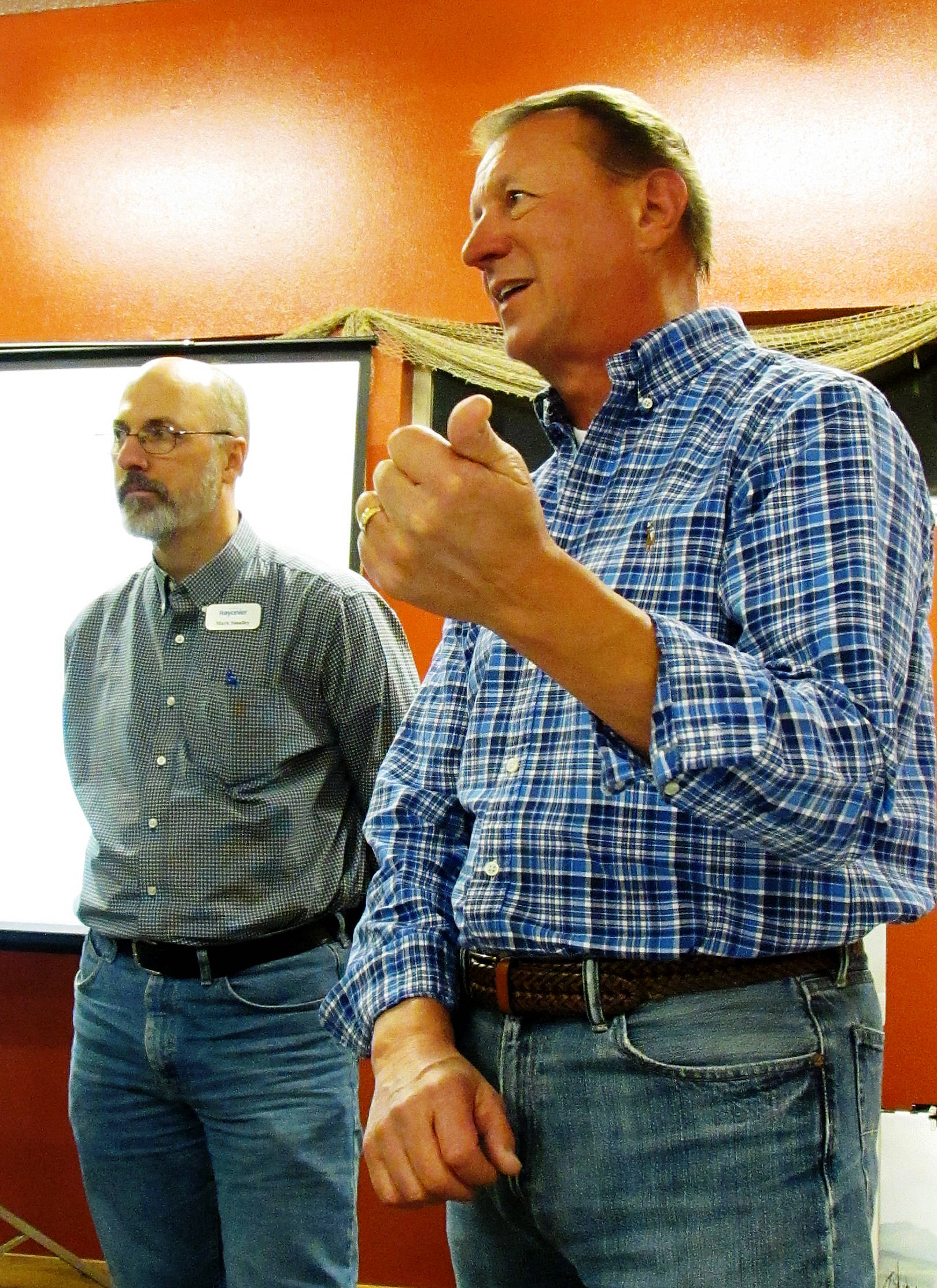By Scott D. Johnston
The Coastal Interpretive Center’s “Glimpses” lecture series began its 2017-18 season Thursday evening with about 30 folks on hand for a talk from two managers with timber industry titan Rayonier.
The complexity, changes and challenges facing the 91-year-old company that began in Shelton, WA, were the subjects of the first of six monthly events held in the banquet room of the Home Port restaurant on Pt. Brown Ave. NW in Ocean Shores.
Hoquiam is Rayonier’s main office for Washington and Oregon, with 23 employees, plus four in their Forks office, and five in North Bend, OR.
Engineering Manager Mark Smalley, who lives in Montesano and works out of the Hoquiam office, said they also hire “hundreds of contractors to do some of our engineering, forestry, and all of our road building, rock crushing, road maintenance, and logging.” He was joined for the talk by Dan Stransky, Rayonier’s Senior Timber Products Marketing Manager.
Smalley related the history of the business, which incorporated in 1926 as the Rainier Pulp and Paper Company and is now in its 10th decade of operation. Developing a dissolving pulp product made from the locally abundant Western Hemlock, that was a key component in the new synthetic “rayon,” brought explosive growth and the company began trading on the NY Stock Exchange in 1937 as “Rayonier,” a named created by combining rayon and Mt. Rainier.
Over the years, Rayonier has split off different operations and is now “just a timberland owning company,” Smalley said, with 325,000 acres in Washington and another 55,000 in Oregon, parts of 2.3 million total acres in the U.S.
Out here, “our expertise is in coastal strip hemlock,” Smalley said, noting that Grays Harbor County and the region has “some of the best tree growing ground in the world; it’s pretty amazing.” He said most of Rayonier’s forests in the county are being harvested for the third time.
The timber industry is heavily regulated in Washington state, with a series of laws going back over 70 years, and the 1999 Forests and Fish Law bringing “a science based set of forest regulations.” Smalley manages five engineers and a geomorphologist, and all of them spend a great deal of time on-site, in the forest, something he considers a huge, happy perk of his job.
Stransky oversees operations in Washington, Oregon and California. He said contemporary forestry practices include leaving a lot of mature trees in no-cut buffers such that some acreage ends up being only about 50 percent harvested.
“We’re going to have a lot of old growth eventually,” he said. “We’re leaving some big stands untouched.”
Area residents have noticed one big stand that has been seriously touched, the area along highway 109 heading into the curves west of Hoquiam. Some of that acreage is Rayonier’s. Responding to a question, Smalley said the slash piles in the area have been partly covered with black plastic to keep enough wood dry so they can be burned this fall.
The Glimpses lecture series takes place at 6:30 p.m. on the third Thursday of each month at the Home Port restaurant. Tickets are $10 each and benefit the non-profit Coastal Interpretive Center, which has operated since 1977 at 1033 Catala Ave. SE, near Damon Point at the south end of the Ocean Shores peninsula.
The next lecture, Nov. 16, has former Daily World city editor Bill Lindstrom discussing his book, “John Tornow: Villain or Victim?”
Additional topics and dates are “How Razor Clam Seasons are Established,” Dec. 21; “Nautilus Live and the Quinault Canyon Exploration,” Jan. 18; “Discover the Forest: Olympic National Forest from a Private Perspective,” Feb. 15; and “Waterfowl: Everything You Didn’t Know,” March 15.
The Glimpses series is sponsored by the Ocean Shores Community Club, the Ocean Shores/North Beach Chamber of Commerce, and Bank of the Pacific. More information is available online at www.interpretivecenter.org.


